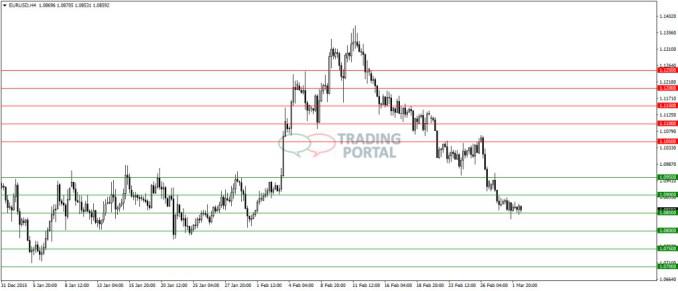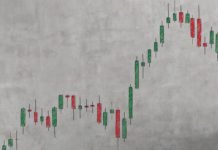Trading in the financial market is becoming more diverse almost daily. The asset classes remain the methodology is becoming more sophisticated. Certain markets have strong trends while others seem to have a balance between buyers and sellers. Traders can only really depend on n ever ending consolidation to build capital.
Traders can be bracketed together into almost infinite groupings from which they are interchangeable. Trend followers are one of the more common groups; using dominant market trends to make a profit. Counter-attackers are the opposite of trend-followers always looking for an opportunity for the trend to end or to affect its end.
Counter-attackers are characterized by the phrases they use: “It is so high it can only come down” and “It can only go up, it can’t get any cheaper”. Identifying the key inflection points is a counter-attacker’s “bread and butter”. The more violent the correction or end to a trend the better he likes it. He is also known to be searching out stop losses and the trend followers trail the trend.
Each strategy leans upon specific assumptions. Each looks at the market in a certain manner predicting the movements in accordance with his view. Wasting time finding the “ideal” strategy means wasting time that could be used more profitably. There is no “norm” in trading financial markets. “Each to their own” as they say. It is important to decide what, when studying a chart, we are looking for. Is it a trend? A Consolidation? Something else Starting with trend identification we can satisfy both trend followers and counter-attackers.
This will lead us nicely onto what grid trading is and how it is used.
What is Grid Trading?
The FX market is characterized by its frequent return to equilibrium. To take advantage of this, grid traders place pending orders that are evenly spaced. Currencies tend to move in narrow ranges although there are also strong trends. A run of loss making trades leads the trader to feel that there is more than a little question regarding the profitability of FX trading.
The notion of grid trading is based upon equally spaced orders taking advantage of a relatively narrow range. For example. If the current price is 1.1000 and we are interested to place sell orders at 50 pips, the first sell order will be at 1.1050, the next at 1.1100 and so on. A buyer would place order at 1.0950 etc.
In this way, a grid of orders is created. This is a useful way of assuming a definite development of events but giving yourself some leeway. There is a possibility of averaging a loss-making position but carful note must be taken when it is clear that the trend remains in place and the strategy has failed. Furthermore, averaging is the single most criticized method adopted by novice traders.

Source MT4
There is no mystery to grid trading and it is hard to even label it a strategy! Setting a series of buy or sell orders at regular intervals is fraught with danger but provides a methodology to remain “in the market”. Such a strategy must be closely monitored and the number of orders in the grid should be no more than 5% in total of the total account.
How to create a grid
Grid trading is something of a catchall expression.
It demands consolidation rather than a trending market. But, aren’t all markets in a trend? All that differs is the length of the trend? Well that is partially true but traders are not inclined towards buying or selling they need to have no prejudged opinion.
The idea is that the market will oscillate between two points while consolidating. It is therefore likely that each order will be filled and become profitable provided care is taken when setting the levels and interval. Within a range the trader is agnostic as to whether he sells then buys back of buys then sells higher.

Within a trend a trader may also use a grid method. Noticing an uptrend but also witnessing deep corrections, buy orders can be placed at intervals to take advantage of the correction.

The question remains at what interval should the orders be placed. The answer is simple…….no one knows. Every situation is different and affected by several factors.
Using an average true range (ATR) could help.
Money management quickly becomes a determining factor. Risk appetite, risk reward and closing levels either profit or loss determine the whole structure. Setting a stop loss is a difficult undertaking given that the whole structure is interdependent. Setting the stop loss at, say 3% the grid needs to be adjusted so that the overall loss is in line.
The biggest mistake is a lack of proper capital management, which puts the trader at risk of losing his entire deposit. It is worth specifying how many levels the mesh will have.
If we determine that we set a maximum of, say, 5 price levels spaced by 10 pips, then in a situation where the price would go away from the original by 60 pips without any 10 pips correction, we automatically close the whole structure without creating a level 6 position.
This means that level 6 is the stop loss level.
If the strategy assumes a 3% risk, the entire net of orders should be constructed so that the maximum loss does not exceed the risk appetite. Grid trading, which is designed to maximize profit without reducing losses, will always lead to the bankruptcy of our account. Too many people lose money ignoring the designation of optimal SL level.
Who is Likely to benefit from Grid Trading?
A thorough understanding of both consolidating and trending markets is essential since this strategy can work in both if properly managed. Profit and loss expectations must be tightly controlled together with an understanding of the underlying risk. The gap between levels on the grid is vitally important to allow for corrections together with a willingness to accept that the structure isn’t for everyone.










